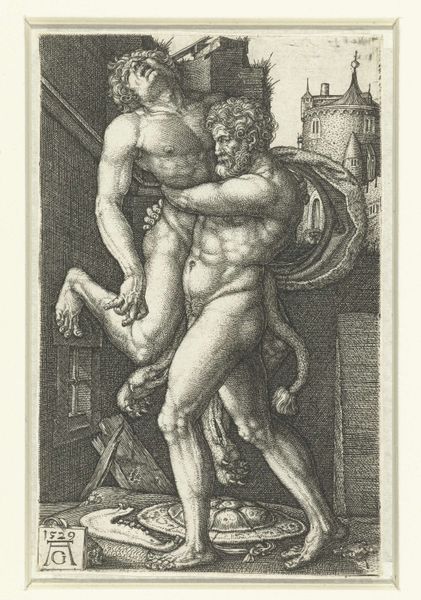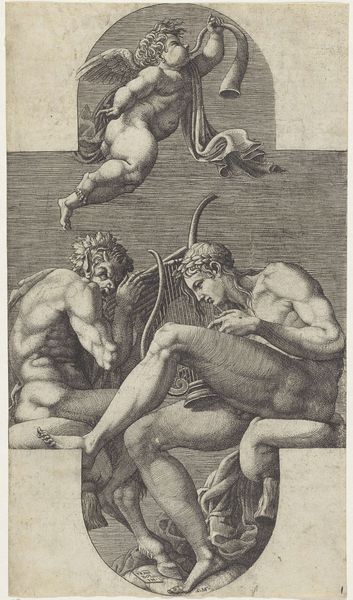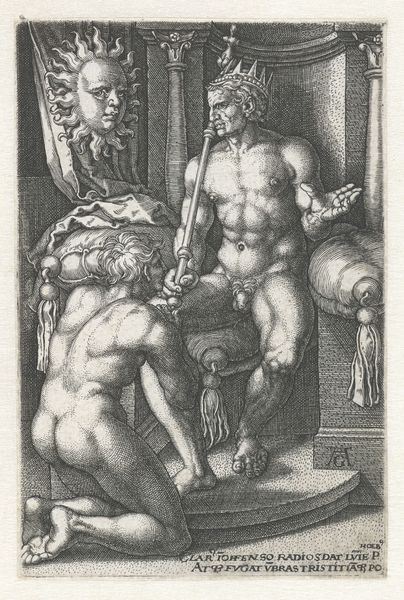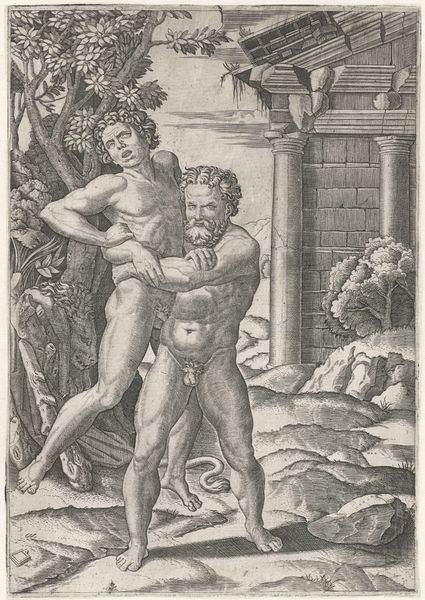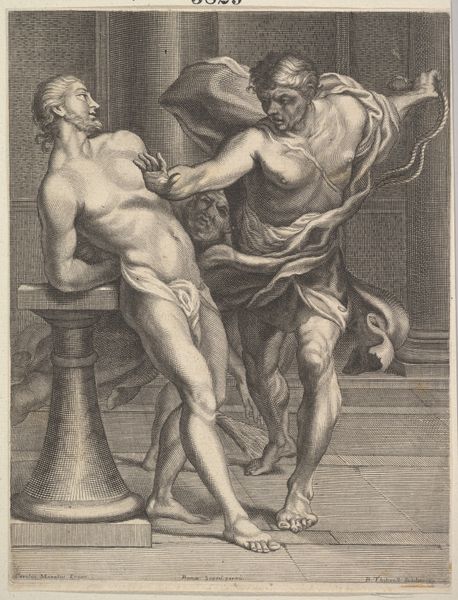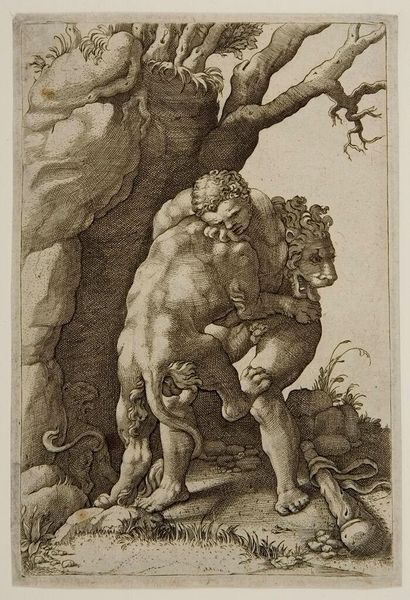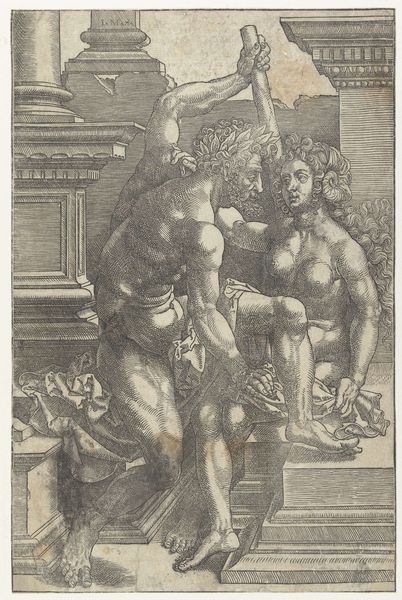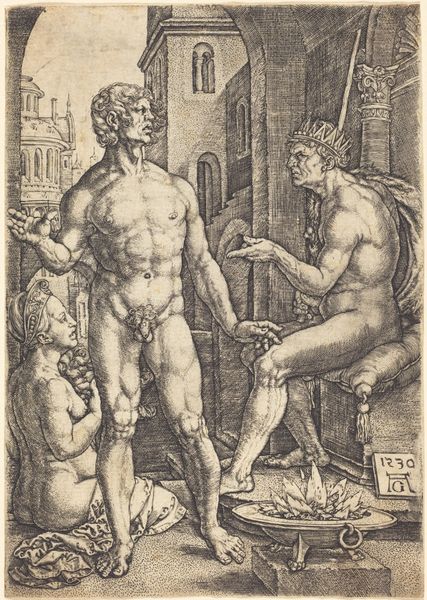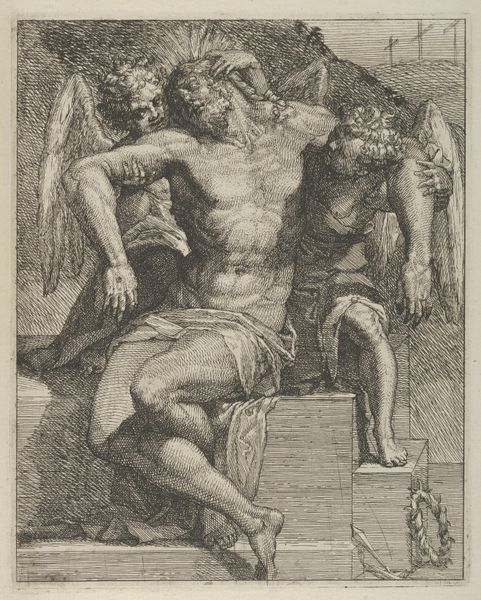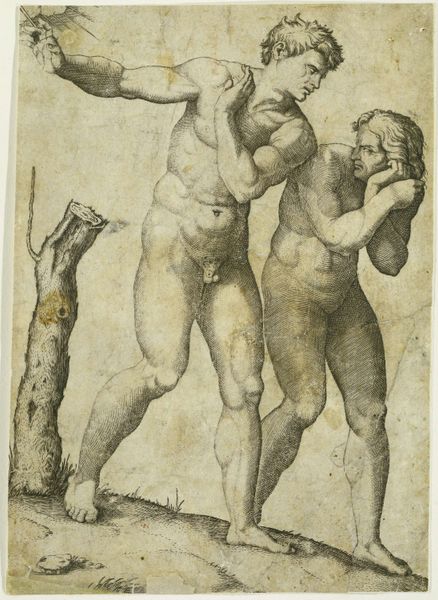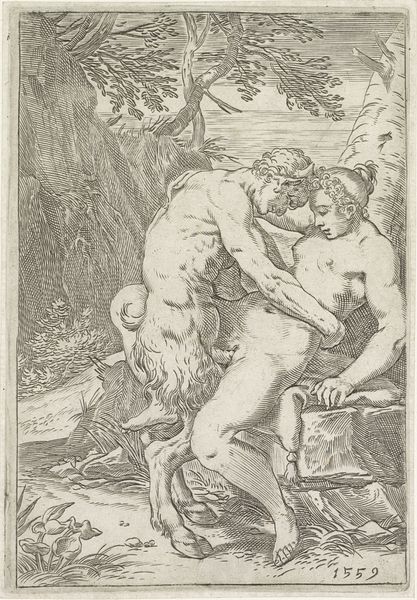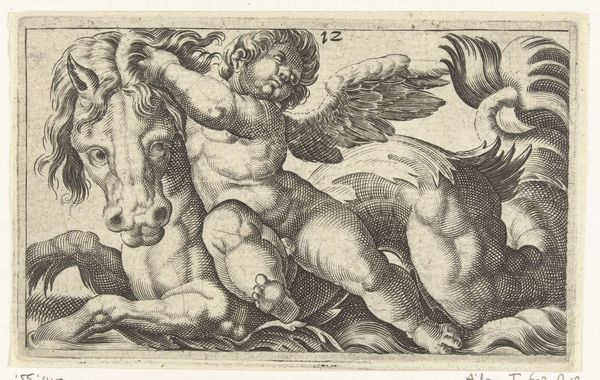
print, engraving
#
narrative-art
# print
#
old engraving style
#
figuration
#
portrait drawing
#
history-painting
#
northern-renaissance
#
engraving
Dimensions: height 94 mm, width 61 mm
Copyright: Rijks Museum: Open Domain
Editor: So, this is Hans Brosamer's "Hercules slaying Antaeus," an engraving from 1540. It feels incredibly dynamic for a print, like I can almost feel the struggle. What strikes you about it? Curator: Well, beyond the impressive technique, I think it is imperative to consider how this image participates in the construction of heroic masculinity within the context of the Northern Renaissance. Look at how Brosamer positions Hercules. What societal values do you think he might be reinforcing, or perhaps even subtly questioning? Editor: Hmm, reinforcing… definitely strength, and maybe some kind of divine right? I mean, he’s Hercules. I suppose there’s also the element of civilization versus barbarism, given Antaeus’ wildness. Is it odd to see these gods from antiquity pop up during the renaissance? Curator: Not at all! The Renaissance saw a revival of classical learning and imagery. However, the crucial question is: How are these classical figures being *re-interpreted* to suit 16th-century concerns? Consider, for instance, the rise of printmaking as a means of disseminating imagery. Who had access to these images? How did these portrayals of strength play into political or religious agendas? Editor: That’s fascinating, considering printed images spread quickly; it must’ve been a powerful tool to project an image of authority back then. I hadn’t really considered that. Thanks! Curator: Precisely. And this piece really underscores the necessity to read artworks not as isolated creations, but as active participants in their historical milieu. I learned a new approach too. Seeing this in relation to societal perspectives and the growth in mass visual communication techniques highlights some complexities.
Comments
No comments
Be the first to comment and join the conversation on the ultimate creative platform.
